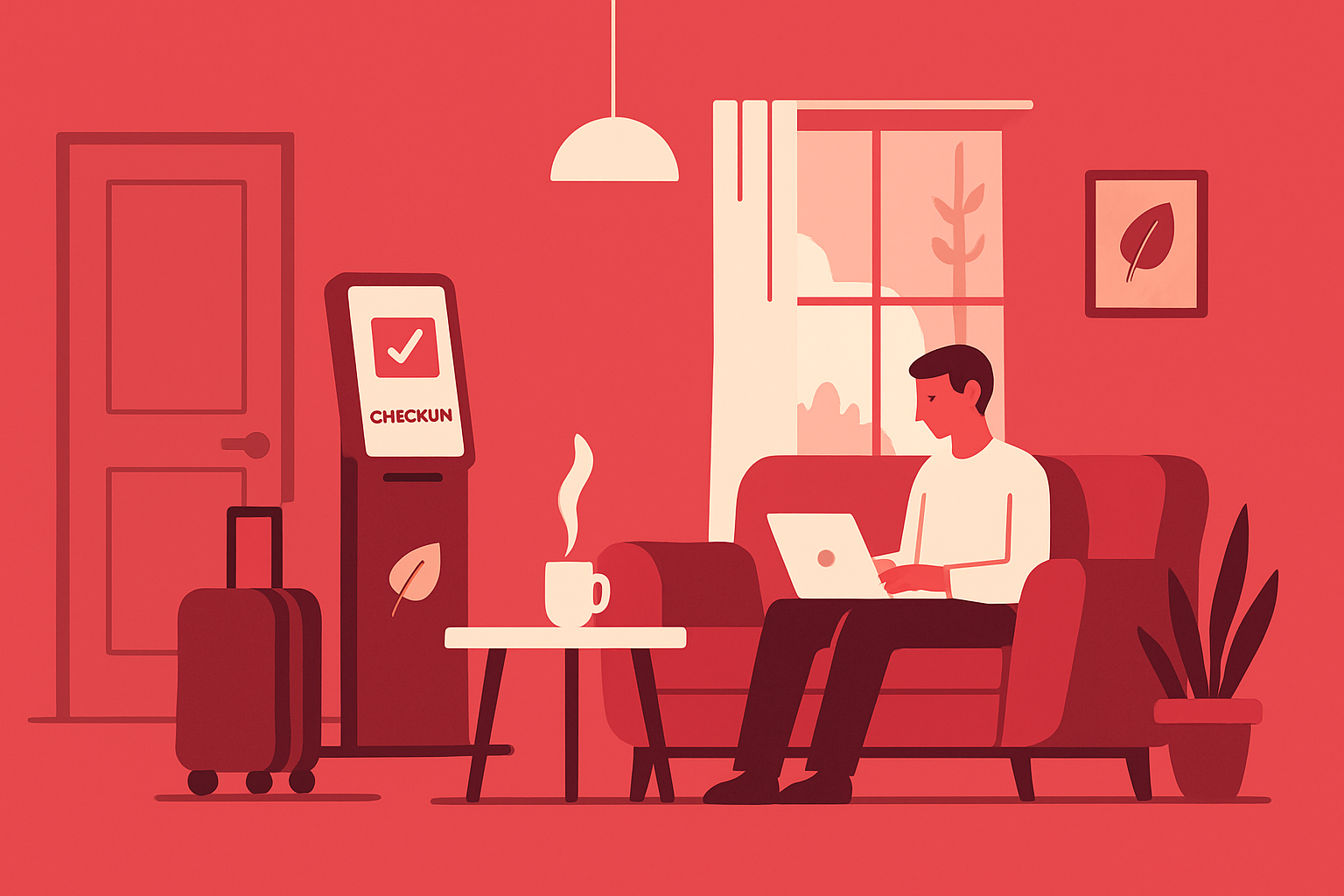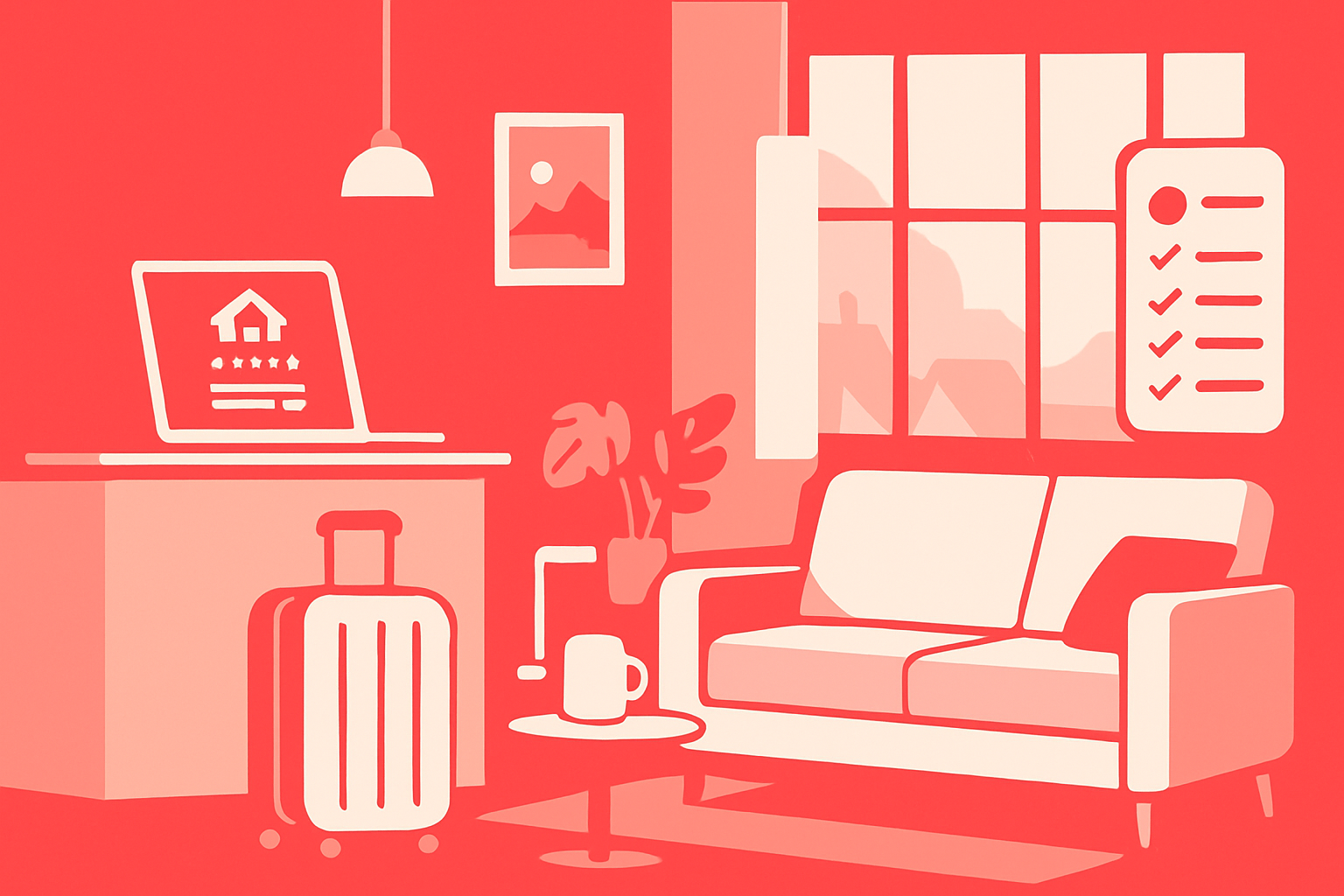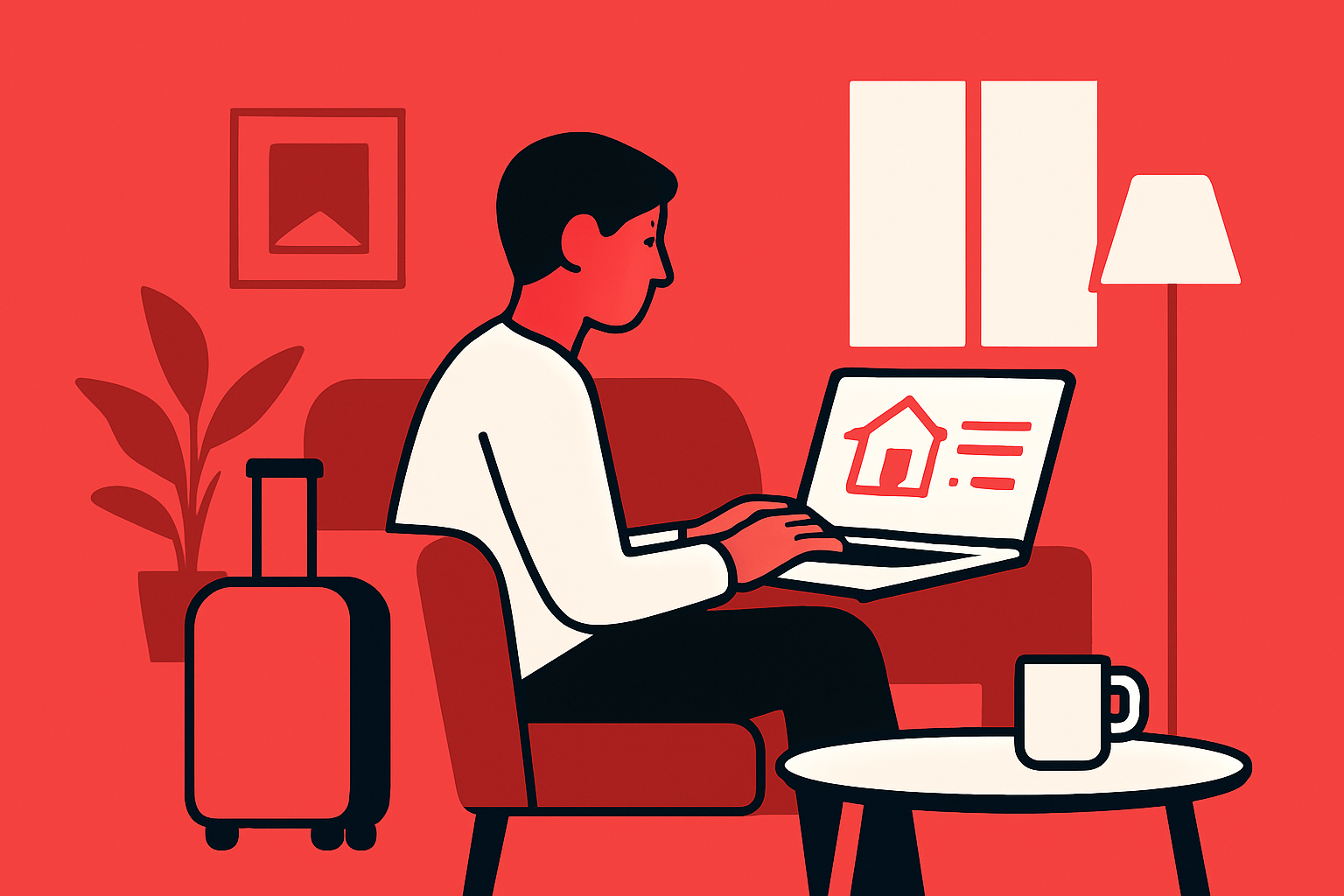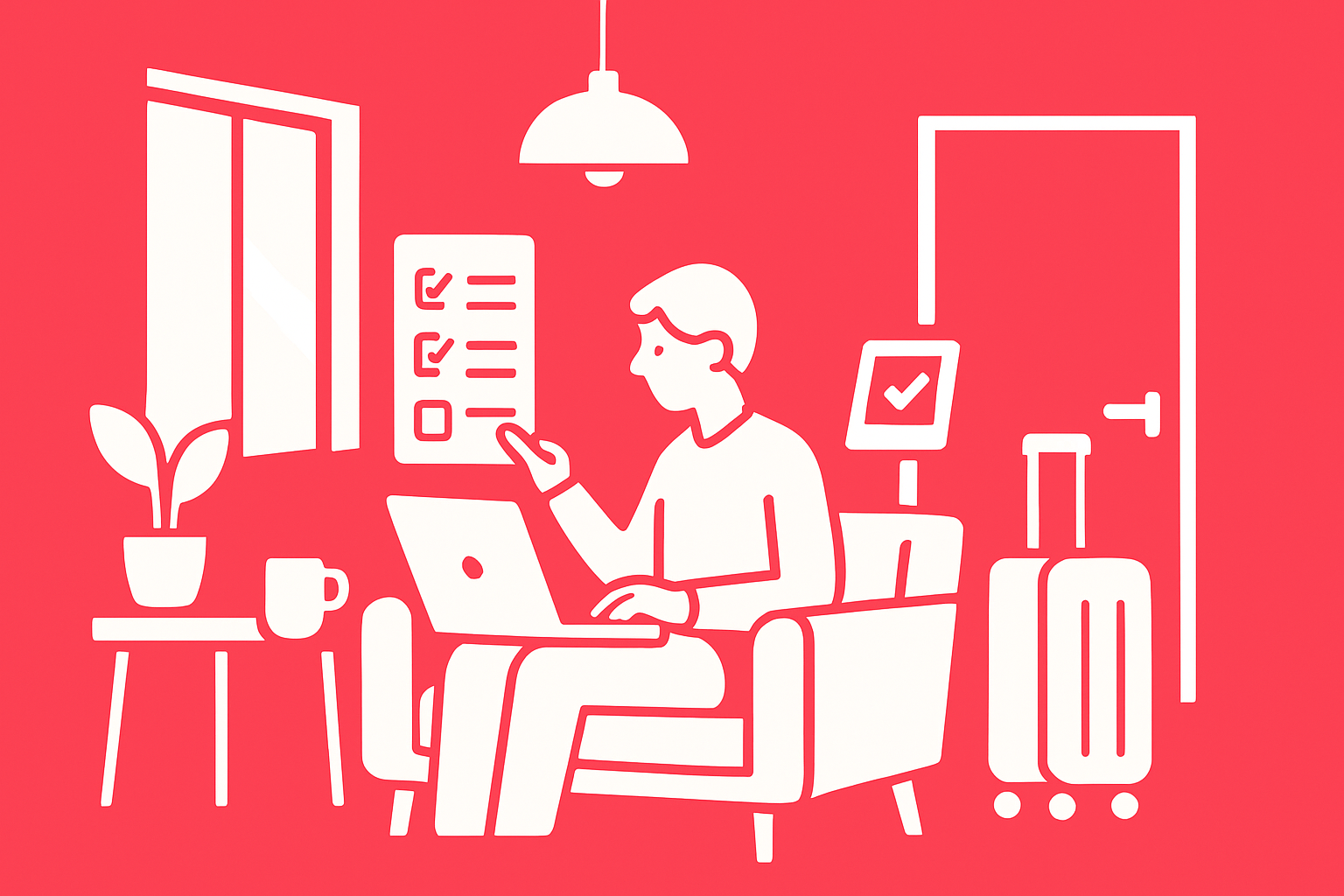|
Getting your Trinity Audio player ready...
|
Imagine discovering your dream home in 2025, skipping the usual stress and endless scrolling. The search for a new rental apartment today is more complex than ever, with rising demand, shifting markets, and evolving expectations.
Technology is transforming how we hunt for apartments, while renters now seek more flexibility and community-focused living. Keeping up with these trends is key to finding the right fit.
This guide will walk you step-by-step through the process of securing your ideal new rental apartment in 2025. You’ll learn how to save time, avoid common pitfalls, and make confident decisions.
Ready to take control of your search? Dive in for expert tips on market trends, budgeting, search tools, virtual tours, applications, and lease negotiation.
Understanding the 2025 Rental Market Landscape
Finding a new rental apartment in 2025 means stepping into a market that's rapidly shifting. Trends and technology are rewriting the rules, with renters facing both fresh opportunities and new challenges.

Key Market Trends and Predictions
The landscape for anyone searching for a new rental apartment has shifted dramatically since 2024. Remote work continues to influence urban migration, with some renters leaving big cities for more affordable secondary markets. However, demand for flexible leases and furnished apartments is on the rise, especially among professionals and digital nomads.
Rental prices in major cities like Stockholm and Gothenburg have surged. According to the April 2025 Rental Report, average rents in top urban areas have climbed by 8% since 2023, putting pressure on budgets. In contrast, smaller cities offer more affordable options, attracting those willing to compromise on location for space and price.
Sustainability is now a major factor. Eco-friendly buildings with energy-efficient features are in high demand, as more renters seek greener living options. Inflation and uncertain economic forecasts continue to impact both rent levels and apartment availability, making it crucial to stay informed about market shifts when hunting for a new rental apartment.
Stockholm and Gothenburg stand out for their tech-driven rental platforms, making the search process smoother and more transparent.
Rental Market Trends Table
| Trend | 2025 Insight |
|---|---|
| Avg. Rent Increase | 8% since 2023 |
| Flexible Lease Demand | High |
| Sustainability Focus | Strong |
| Urban vs. Secondary Markets | Secondary markets more affordable |
The Role of Technology in Apartment Hunting
Technology is now central to the new rental apartment search. AI-powered rental platforms use smart algorithms to match renters with ideal properties based on preferences, budget, and lifestyle needs. Virtual and augmented reality are transforming the viewing process, allowing renters to tour apartments remotely and make confident decisions without ever stepping inside.
Mobile-first applications dominate, giving renters instant access to listings and direct messaging with landlords. Blockchain technology is also emerging, ensuring secure and transparent rental agreements and payment processes. Over 60% of renters now use at least one digital tool or app when searching for a new rental apartment, showing just how quickly the process is evolving.
These innovations save time and reduce stress, especially for long-distance movers or those with tight schedules.
Evolving Renter Preferences
Today's renters are more selective than ever when choosing a new rental apartment. High-speed internet, coworking spaces, and on-site fitness centers have become essential amenities, especially for those who work remotely. Pet-friendly policies and move-in ready units are also top priorities, reflecting a desire for both flexibility and comfort.
Buildings that focus on community and wellness are on the rise. Features like communal lounges, wellness rooms, and eco-conscious initiatives attract a new generation of renters. Data shows that 72% of Gen Z renters place a premium on sustainability and community-oriented amenities when evaluating their next new rental apartment.
As expectations change, landlords and property managers are adapting, offering flexible lease terms and curated living experiences to meet evolving demands.
Setting Your Budget and Priorities
Setting a clear budget and understanding your priorities are the foundation of any successful new rental apartment search. With more options and rising prices in 2025, knowing your limits and needs helps you avoid stress and make confident choices. Let’s break down how to calculate your budget, define your must-haves, and ensure your new rental apartment fits your lifestyle—now and in the future.

Calculating Your Rental Budget
Before you fall in love with a new rental apartment, it’s crucial to know what you can realistically afford. The golden rule is to spend no more than 30% of your monthly income on rent. For example, if you earn €2,500 a month, your maximum rent should be around €750.
But don’t stop there. Remember to factor in all additional costs:
- Utilities (electricity, water, heating)
- Internet and cable
- Parking fees
- Renter’s insurance
- Maintenance or amenity fees
Here’s a quick budgeting table to help visualize your target range:
| Monthly Income | Max Rent (30%) | Estimated Total (with extras) |
|---|---|---|
| €2,500 | €750 | €900–€1,000 |
| €3,500 | €1,050 | €1,200–€1,300 |
| €5,000 | €1,500 | €1,700–€1,900 |
Use online calculators and budgeting apps to keep your numbers accurate. This approach keeps your new rental apartment search realistic and prevents surprises down the line. Keeping your finances in check means you’ll have more freedom to enjoy your space and community.
Defining Must-Have vs. Nice-to-Have Features
Once you know your budget, clarify what you absolutely need in your new rental apartment versus what would simply be a bonus. Start by listing non-negotiables:
- Safe neighborhood
- Proximity to work or transit
- Pet policy (if you have pets)
- Elevator or ground floor (if you have accessibility needs)
Then, make a second list of nice-to-haves:
- In-unit laundry
- Balcony or outdoor space
- On-site gym or coworking area
- Extra storage
Think about your lifestyle. Do you work remotely and need a dedicated workspace? Would a longer commute be worth an extra bedroom or a quieter neighborhood? Sometimes, you’ll face trade-offs. For instance, you might have to choose between a central studio or a bigger place further out.
A clear list helps you compare properties and quickly spot the new rental apartment that ticks your most important boxes. This step saves time and keeps you focused, especially when competition is high.
Considering Future-Proofing and Flexibility
The 2025 rental market is all about adaptability. When choosing a new rental apartment, think ahead. Do you plan to stay long-term, or might your job or family situation change soon? Flexible lease options, like month-to-month or six-month contracts, are increasingly popular. Furnished rentals are perfect if you expect to relocate again or need a temporary setup.
According to recent data, 40% of renters in 2024 chose flexible lease terms. If you want to explore your options further, check out this Flexible rentals guide for practical tips and insights on adapting to change.
Planning ahead ensures your new rental apartment fits your needs no matter what life throws at you. Being proactive about flexibility means fewer headaches and more freedom to seize new opportunities.
Apartment Search Strategies and Tools
Searching for a new rental apartment in 2025 is nothing like it was just a few years ago. With so many digital tools, social networks, and new ways to tour and book, the process is faster and more efficient—if you know where to look. The right strategy and tools can make all the difference between endless scrolling and finding your perfect fit.

Leveraging Online Platforms and Apps
The first stop for most new rental apartment seekers is a robust online platform or app. In 2025, these tools are smarter than ever, with AI-powered search filters, instant notifications, and verified listings to keep you safe from scams.
Here’s a quick comparison of popular digital platforms:
| Platform | Key Feature | Best For |
|---|---|---|
| Guestly Homes | Corporate housing, verified listings | Professionals, expats |
| Blocket Bostad | Wide selection, filters | Local renters |
| Qasa | Flexible lease options | Short-term, students |
Setting up alerts and using advanced filters helps you zero in on that elusive new rental apartment before anyone else. Double-check listings for verification badges, and always cross-reference the landlord’s details.
For a deeper dive into the most reliable digital platforms, check out this useful guide on the best rental listing websites.
The Power of Social Media and Networking
Social media platforms have become hubs for finding your next new rental apartment. Facebook groups, LinkedIn, and local forums often feature hidden gems that never make it to mainstream websites.
- Join neighborhood Facebook groups for up-to-date listings.
- Tap into your professional network for insider tips.
- Ask friends or colleagues for personal recommendations.
Many renters have scored great deals simply by responding to a post or DM. Networking might just connect you to your dream space before it’s even advertised.
Virtual Tours and Remote Viewing Options
Long-distance moves or tight schedules? Virtual tours are now standard when searching for a new rental apartment. Many landlords offer live video walkthroughs or 3D tours so you can get a real feel for the space from anywhere.
Here’s how to maximize remote viewing:
- Schedule live video calls to ask questions in real time.
- Request detailed videos of important features.
- Compare virtual tours with in-person options if possible.
Virtual-only tours save time but may miss subtle issues, so always ask for clear visuals of every room.
Working with Real Estate Agents and Relocation Services
Sometimes, the fastest path to a new rental apartment is through a reputable agent or relocation service. Agents can access exclusive listings, negotiate on your behalf, and guide you through paperwork.
When should you consider professional help?
- If you’re relocating from abroad or on a tight timeline.
- When searching for high-demand, furnished, or specialized rentals.
- If you want a stress-free, hands-off experience.
Always vet agents carefully—ask for references and check reviews to avoid surprises.
Streamlined Corporate Housing Solutions for Professionals
For professionals and project teams, finding a new rental apartment is about more than just location. Companies like Guestly Homes offer move-in ready, fully furnished rentals in key Swedish cities, making transitions smooth and efficient.
Benefits include:
- Hassle-free booking and flexible lease terms.
- Premium amenities such as high-speed WiFi, gym access, and housekeeping.
- Sustainability options for eco-conscious renters.
Corporate housing solutions save time and support productivity, especially during long-term assignments or relocations.
Touring, Inspecting, and Evaluating Apartments
Searching for a new rental apartment can feel overwhelming, but mastering the touring and inspection process makes all the difference. By planning ahead and knowing what to look for, you can confidently compare options and avoid costly mistakes. Let's break down each step for a seamless experience.

Planning Efficient Apartment Tours
Efficiently touring multiple apartments in one day can save you time and energy during your new rental apartment search. Start by mapping out locations and scheduling viewings close together to minimize travel. Use digital calendars to keep track of appointments and set reminders.
Bring essentials such as a printed or digital checklist, a measuring tape for furniture planning, your phone or a camera for photos, and a notepad for jotting down observations. These tools help you compare each new rental apartment objectively.
Safety remains a priority, especially in a post-pandemic world. Wear a mask if required, use hand sanitizer, and confirm access protocols with landlords ahead of time. If possible, bring a friend or family member for a second perspective and added security.
What to Look for During an Inspection
When inspecting a new rental apartment, focus on both visible and hidden issues. Check for signs of water damage on ceilings and walls, test all appliances, and inspect windows and doors for proper sealing. Look for evidence of pests or mold, which can cause trouble later.
Pay attention to heating and cooling systems, as well as the condition of plumbing and electrical outlets. Security features like sturdy locks and well-lit entryways are crucial for peace of mind. According to recent data, 20% of renters discover problems only after moving in, so a thorough inspection is essential.
For those seeking the latest listings, consider exploring new apartments for rent in Piteå to see examples of well-maintained, move-in ready properties. This practical approach helps ensure your next new rental apartment meets your standards and avoids unwanted surprises.
Questions to Ask Landlords or Property Managers
Before committing to a new rental apartment, prepare a list of key questions for the landlord or property manager. Clarify the lease terms, including the length of the contract, renewal options, and any break clauses. Ask about maintenance response times and who is responsible for repairs.
Inquire about rules regarding pets, guests, and subletting. Be sure to discuss deposits, application fees, and whether utilities are included in the rent. By addressing these topics up front, you can avoid hidden costs and misunderstandings that could affect your new rental apartment experience.
Evaluating the Neighborhood and Local Amenities
A great new rental apartment goes beyond the unit itself—its neighborhood matters just as much. Evaluate proximity to public transit, grocery stores, schools, and healthcare facilities. Explore the area's walkability, nightlife, and overall community vibe.
Use online crime maps and neighborhood review sites to assess safety. According to recent data, 65% of renters rate neighborhood safety as a top priority when choosing a new rental apartment. Taking the time to explore the surroundings ensures your next home is not only comfortable but also fits your lifestyle.
Navigating the Application and Lease Process
Finding your new rental apartment is only half the journey—the real challenge starts when you enter the application and lease process. To secure your ideal home in 2025, you’ll need to prepare, advocate for your interests, and understand the latest trends in renter screening and agreements. Here’s how to make every step count.
Preparing a Strong Rental Application
A compelling application is your ticket to landing a new rental apartment, especially in competitive markets. Start by gathering essential documents:
- Government-issued ID (passport or national ID)
- Proof of income (recent pay stubs, employment contract, or bank statements)
- References from previous landlords or employers
- Credit report, if required
Consider creating a digital rental portfolio. This lets you submit everything quickly, which can be the edge you need if there’s a rush for your desired new rental apartment.
Be ready for application fees and deposits. Some landlords may ask for a personal introduction or a brief statement about why you’re the right tenant. Personal touches show responsibility and help you stand out.
Understanding Lease Agreements and Legal Rights
Once your application for a new rental apartment is accepted, review the lease agreement with care. Look for details about lease length, renewal clauses, and break policies. Don’t skip the fine print—1 in 4 renters sign leases without reading them fully.
Stay aware of your legal rights as a tenant in 2025. Rules can differ by city or country, but key protections often include limits on rent increases and requirements for reasonable notice periods. Watch out for red flags like excessive penalties or unclear maintenance responsibilities.
To stay informed about evolving renter protections and decision-making trends, check the insights in the 2025 Rentals Consumer Housing Trends Report.
If anything seems off, ask questions or seek advice before you sign. Protecting your interests now will prevent headaches in your new rental apartment later.
Negotiating Rent and Lease Terms
Negotiation is a normal—and often expected—step when finalizing your new rental apartment. Don’t hesitate to ask for better terms, whether it’s a lower monthly rent, included utilities, or a flexible move-in date.
Landlords may be open to upgrades or repairs, especially if you’re willing to sign a longer lease. Use market data to support your case; if similar apartments are renting for less, mention that.
Here are negotiation tips to try:
- Request a rent discount for early payment or longer lease commitment
- Ask for small improvements (fresh paint, updated appliances)
- Propose splitting costs for amenities, such as parking or internet
Clear, polite communication often leads to better results. You deserve the best possible deal on your new rental apartment—don’t leave value on the table.
Handling Background Checks and References
Most landlords will conduct a background check before approving your new rental apartment. They’re looking for evidence of reliability, like a clean rental history and steady income.
Prepare your references in advance. Choose people who can vouch for your responsibility, such as previous landlords or supervisors. Let them know they might be contacted so they’re ready to respond quickly.
According to recent rental market predictions, tenant screening is becoming even more thorough in 2025, with a growing focus on digital verification and security. Address any issues proactively—if you have a blemish on your record, explain it honestly up front.
A strong reference and a transparent approach can make all the difference when securing your new rental apartment.
Moving In and Settling Into Your New Apartment
The moment you receive the keys to your new rental apartment is both exciting and a bit overwhelming. With boxes stacked at the door and a fresh space awaiting your touch, efficient planning is key. Settling in smoothly sets the tone for your entire experience. Let’s break down your move-in journey—step by step—so you can feel right at home from day one.
Organizing Your Move Efficiently
A structured move is the secret to a stress-free start in your new rental apartment. Begin by creating a moving checklist and timeline. This helps you keep track of every detail, from booking movers to packing essentials.
Here’s a quick comparison of moving options:
| Option | Pros | Cons |
|---|---|---|
| DIY Move | Cost-effective | Time-consuming |
| Professional Movers | Fast, less physical work | Higher cost |
Packing smartly is essential. Label each box by room, and keep essentials—like chargers and toiletries—easily accessible. Apps for inventory management can streamline your packing process.
Consider these moving tips:
- Schedule your move during off-peak hours to avoid traffic.
- Notify your landlord about the move-in date.
- Take photos of your new rental apartment before unpacking for documentation.
With preparation, your move-in day will feel more like a fresh beginning than a daunting task.
Setting Up Utilities and Essential Services
Arriving at your new rental apartment, you’ll want utilities up and running. Start by contacting service providers for electricity, water, internet, and waste collection as soon as you know your move-in date.
Compare providers to find the best rates and reliability in your area. Many renters use online comparison tools to save both time and money. On average, the setup process for all utilities is 5–7 days, so plan accordingly.
Key steps for a seamless setup:
- Transfer existing accounts, or set up new ones under your name.
- Schedule installation appointments in advance, especially for high-speed internet.
- Confirm with your landlord which services are included in your rent.
The right preparation ensures your new rental apartment feels ready and functional from the start. Remember, a well-connected home is the foundation for comfort and productivity.
Personalizing and Securing Your Space
Transforming your new rental apartment into a cozy retreat is all about the details. Focus on décor that’s renter-friendly—think removable wallpaper, area rugs, and smart lighting. Even small touches, like houseplants or framed photos, can make a big difference.
Security is equally important. Consider these upgrades:
- Install a smart lock or portable doorbell camera (with landlord approval).
- Purchase renter’s insurance for added peace of mind.
- Check all windows and doors for proper locks.
For a quick win, unpack your favorite items first. This instantly adds warmth and familiarity to your new rental apartment. By blending comfort with security, you’ll create a space that truly feels like home.
Building Relationships with Neighbors and Community
A supportive community can make your new rental apartment experience far more rewarding. Start by introducing yourself to neighbors, even with a simple hello in the hallway or at the mailbox.
Look for building groups or local community events—many apartment complexes host gatherings for new residents. Participating in these can help you build lasting connections.
Why is this important?
- Renters with strong community ties report higher satisfaction rates.
- Friendly neighbors can offer recommendations for local services or answer questions about your building.
- Getting involved helps you settle in faster and feel like you belong.
Embrace the opportunity to make your new rental apartment more than just a place to sleep—it can become your home base for new friendships and experiences.
Now that you know what it takes to find the perfect rental apartment in 2025—whether it’s understanding market trends, setting your priorities, or making the move as smooth as possible—why not see what’s actually available right now? If you’re ready to put these tips into action and want a place that’s comfortable, flexible, and feels like home, I invite you to browse some of the top options out there. Take the next step in your apartment hunt—See Available Homes and discover spaces designed for professionals just like you.


